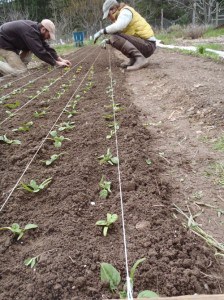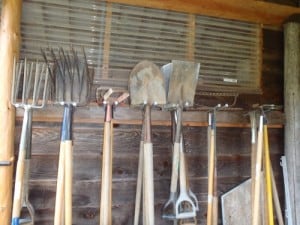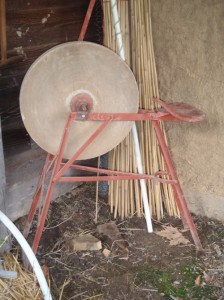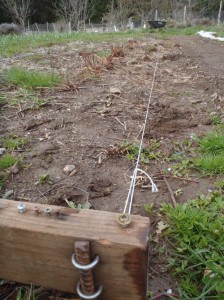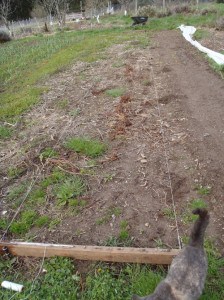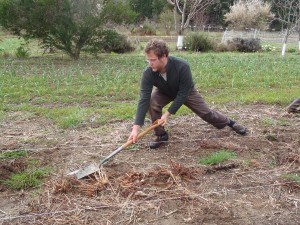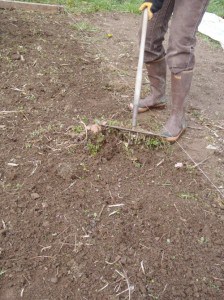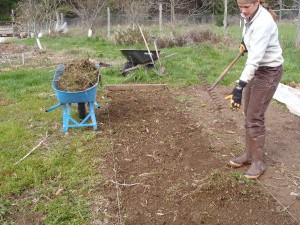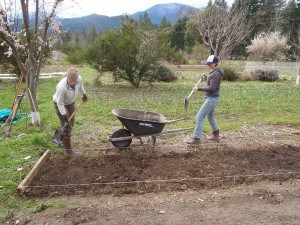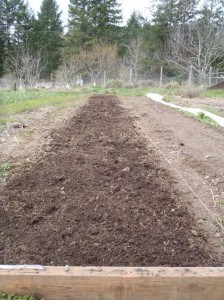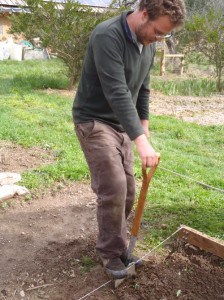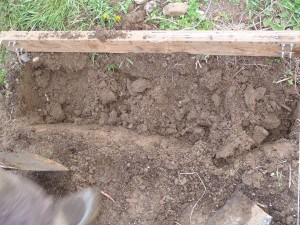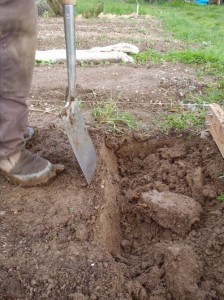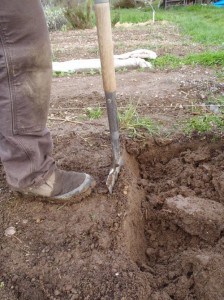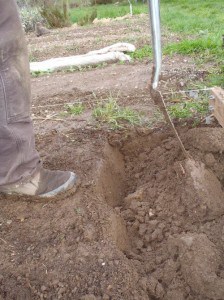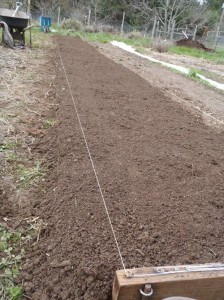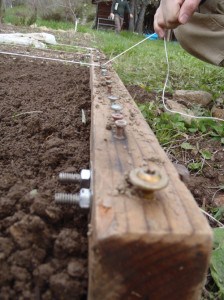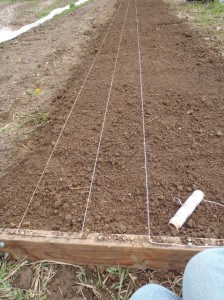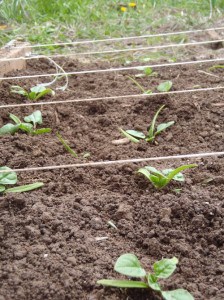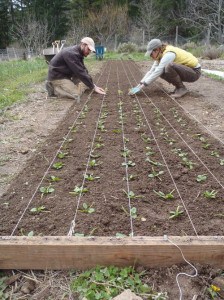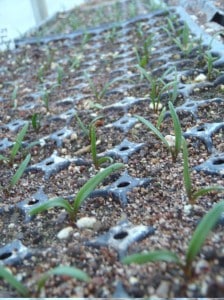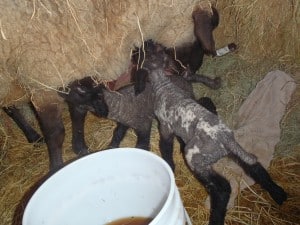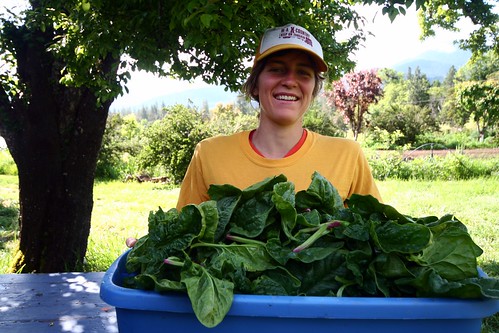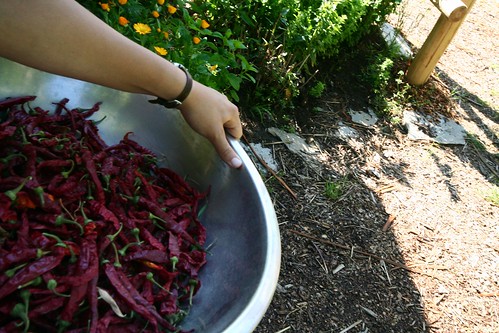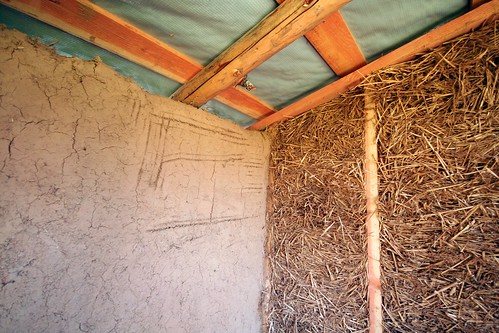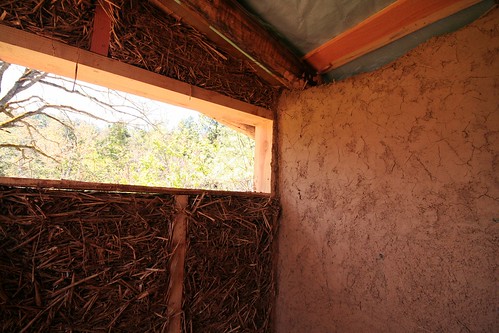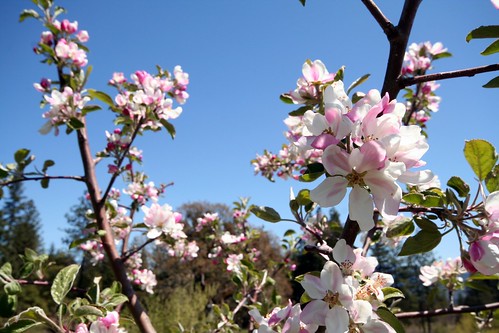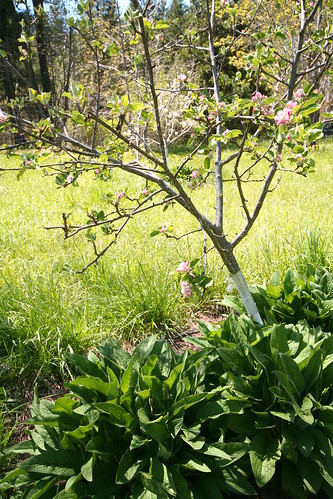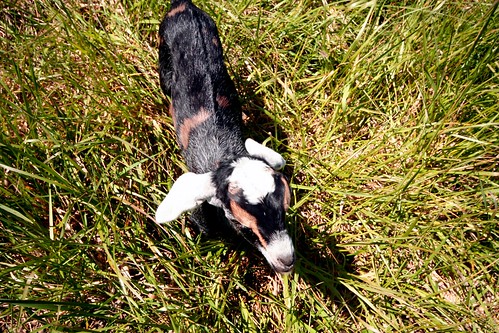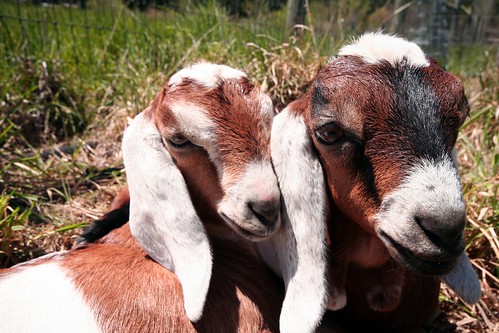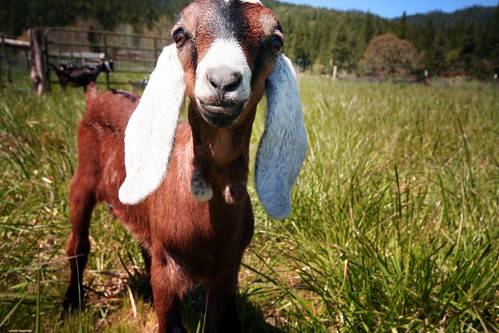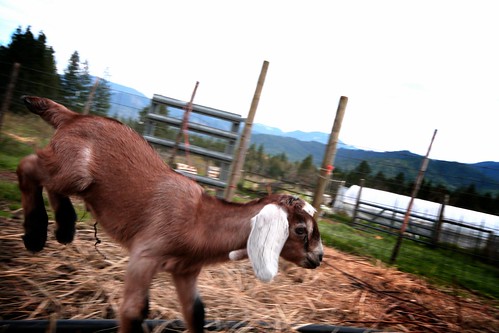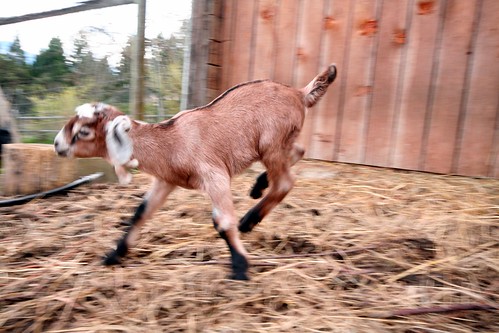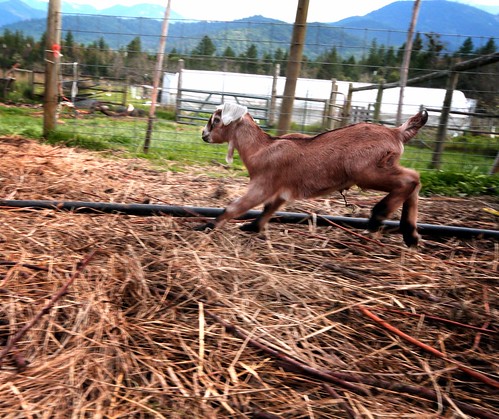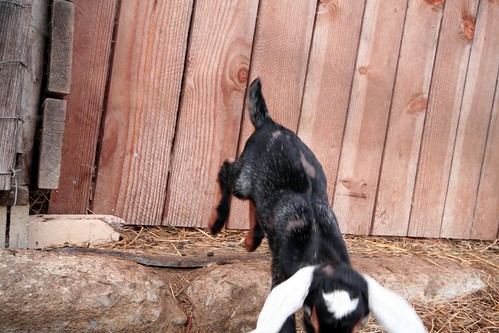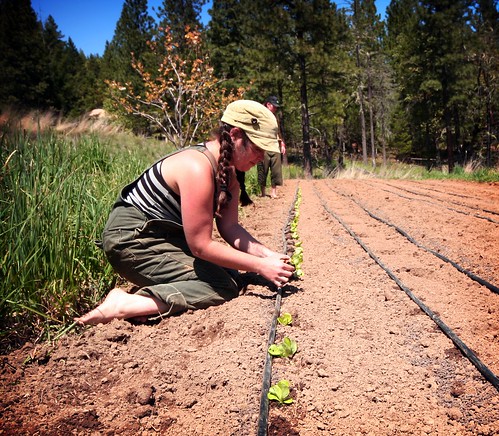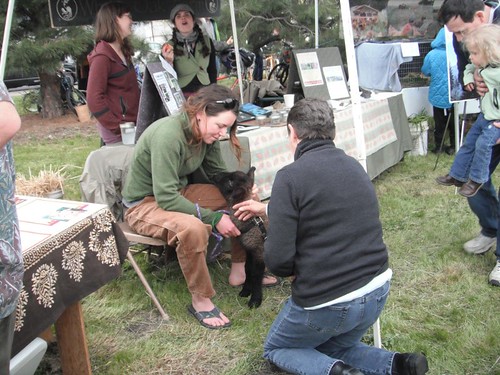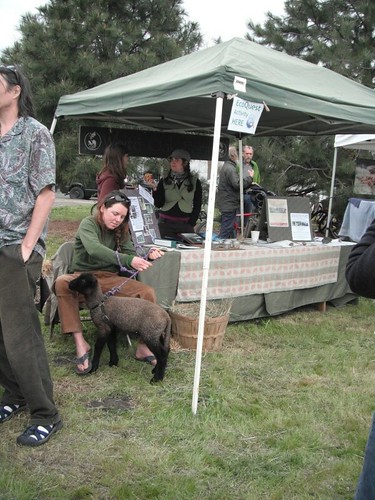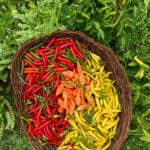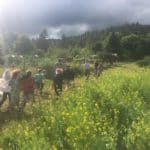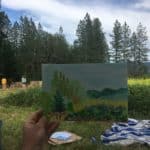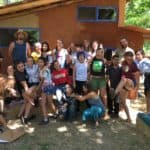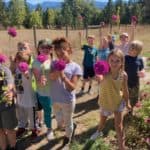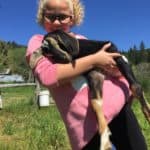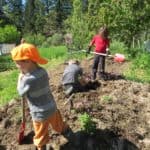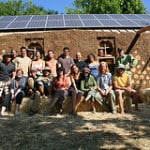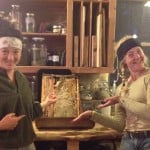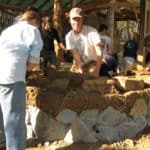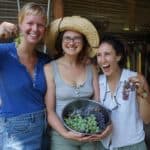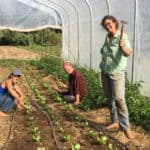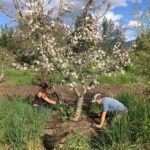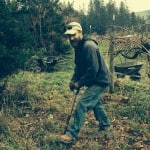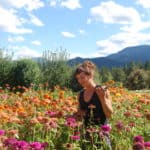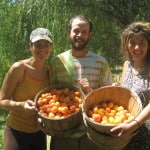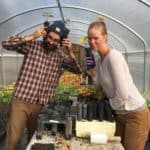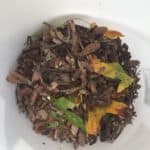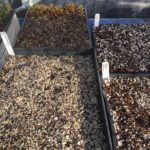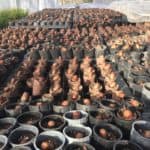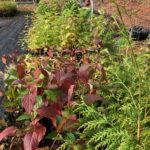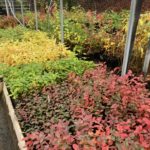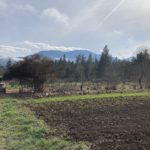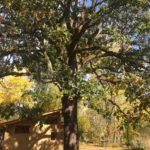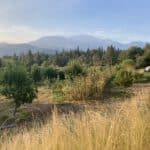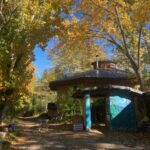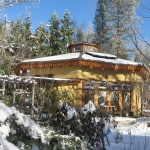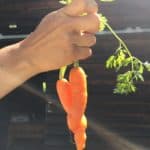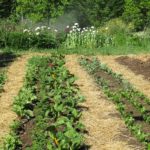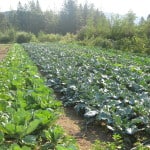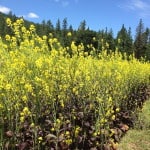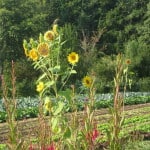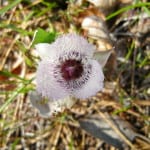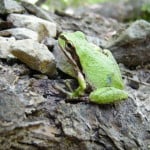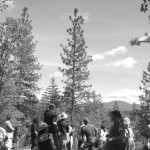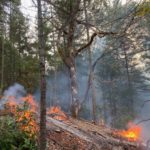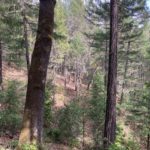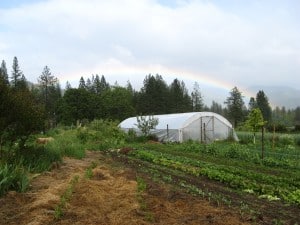 Incredibly, 2012 marks a full decade in the life of White Oak Farm. I can see the telltale signs in the growth of fruit and nut trees, the maturity of our programs, and the milestones in the lives of our former students. Some of our first campers from 2003 are now college graduates, world travelers, gardeners, and parents. When they approach our farmer’s market booth I am so impressed by their confidence and grace, and I am humbled that the Farm had the chance to be a part of their childhoods. Many of our former interns have also gone on to accomplish amazing things: becoming teachers, farmers, builders, and restoration foresters among other pursuits. These inspiring graduates of our programs give us the enthusiasm to welcome new students each year onto the land.
Incredibly, 2012 marks a full decade in the life of White Oak Farm. I can see the telltale signs in the growth of fruit and nut trees, the maturity of our programs, and the milestones in the lives of our former students. Some of our first campers from 2003 are now college graduates, world travelers, gardeners, and parents. When they approach our farmer’s market booth I am so impressed by their confidence and grace, and I am humbled that the Farm had the chance to be a part of their childhoods. Many of our former interns have also gone on to accomplish amazing things: becoming teachers, farmers, builders, and restoration foresters among other pursuits. These inspiring graduates of our programs give us the enthusiasm to welcome new students each year onto the land.
This year we had the opportunity to do a lot of welcoming! Thanks to our Education Co-Coordinators Julie and Dave, 2012 was a banner year for children’s education at White Oak. During the spring we hosted 20 school visits, including a three day high school trip in May. Over the summer we had two weeks of our residential FarmStay program, as well as a week of Day Camp. Julie and Dave also started a new pre-school program on the Farm that allowed us to host our youngest farmers yet: three to five year-olds. This fall we also created a new partnership with Rogue Valley Farm to School to run ten Harvest Meal school visits for classes from across Josephine County. Overall this year has been our most successful yet in providing a diverse set of educational experiences to hundreds of children throughout southern Oregon and northern California in terms of numbers served and breadth and quality of our offerings. Please read Dave and Julie’s articles in the blog for more details on these great programs.
This season we also had the opportunity to host two amazing interns for our six month training program in Organic Farming, Environmental Education, Homesteading, and Natural Building. Kristy and Andrew joined us in April after living in Alaska for the last several years. Through cold rain and hot sun they joined us in the fields to lead children’s groups, woke early to harvest greens for the CSA, and focused intently to make the final coat of plaster on the new farmstand just right. They also participated in the Rogue Farm Corps farmer-training program, each weekend attending a tour and class at a different local farm. This year for the first time these classes were offered for college credit, making the experience even more valuable for its 20 plus participants. I also had the opportunity to teach two classes to this intern group: one on cover crops and crop rotation, and another on natural building.
The Farm itself also had a bountiful year; producing record yields of apples and pears, and providing our cooperative CSA and the Williams Farmers Market with beautiful and abundant fruits, greens, roots, and seeds. With the help of a grant from the USDA we were able to install a 2300 square foot greenhouse to allow us to produce more year-round food for local families. Next year we will be growing indoor peppers, tomatoes, and ginger during the summer and salad greens and spinach all winter long. Our fields also produced several noteworthy seed crops this year for two organic seed companies: including tatsoi, lettuces, tomatoes, and zinnias. As I write this they are waiting in the barn for me to finish the newsletter and get back to cleaning seeds and sending them off in the mail.
Organizationally 2012 was a productive year as well. Our board of directors had an informational training session in the early summer with a statewide non-profit consultant. We picked up a few new tools, and were also pleased to be affirmed that in her eyes we were already doing an excellent job of stewarding the non-profit for the future. Without our dedicated volunteer board White Oak Farm would not be the stable and successful organization that we are. Many thanks to James Haim, Eli Sarnat, Wendy Reordan, Jenny Kuehnle, and Eric Hansen for all their good work.
With ten years behind us, I find myself deeply thankful for all the dedicated people who have given so much to White Oak Farm and our broader community over the last decade. Giant thanks go to my co-founders Eli and Stacey who stuck with the project through the less-glorious early years of hard work. All our board members, interns and staff over the years have been the backbone of the Farm, and most have the dirty fingernails to prove it. There have also been hundreds of volunteers who have done everything from leading groups of kids, to mixing cob, to producing our newsletter whose selfless gift of their time has been indispensable. And of course there are the many generous foundations and individual donors who have cumulatively contributed hundreds of thousands of dollars to this project. None of our work would be possible without this financial support. Thanks also go to you, the readers of our blog, who read our stories each year, send a check, share our work with friends, or send us good thoughts in your own unique ways. We appreciate your time and support, and hope our work and words help brighten your day. With the close of another great year on the Farm, we look back with fondness, while also looking forward with excitement and anticipation for the many new opportunities that await in the years and decades to come.

